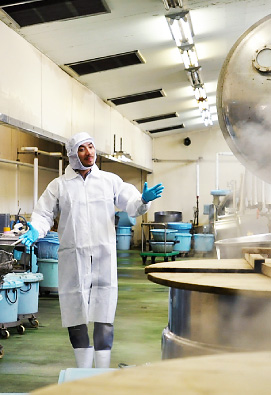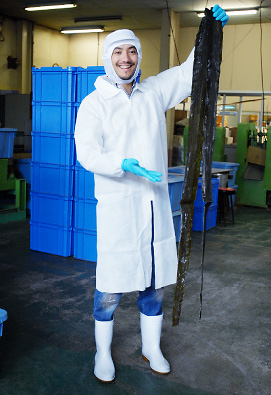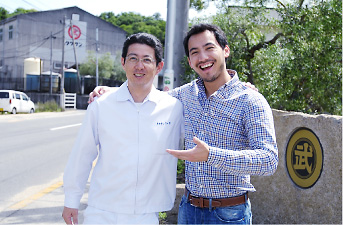| Takesan tsukudani brings out the natural flavor of all the ingredients. This means that the quality of the basic building blocks is just as important as the secret sauce and the manufacturers’ skills. “We use wide, thick kelp from Hokkaido,” Mr. Fukui tells me. “For seaweed, we select only the best varieties, such as iwanori from the Amakusa region in Kyushu.” Safe and healthy, that’s their rule of thumb for selecting ingredients. Which explains why Takesan insists on additive-free tsukudani. |
|
Apparently tsukudani is also affected by food fads and trends. “So many people are health conscious now that we’ve increased our range of low-sodium tsukudani,” Mr. Fukui told me. I asked him what their most popular variety is, assuming that it must be kelp. To my surprise, he said it was ginger. I guess that makes sense because ginger is Japan’s latest craze. It’s believed to raise body temperature and increase immunity. Takesan has also developed versions made with tiny fish, butterbur, beef and other ingredients. It’s amazing how many variations there are. |
|
To be honest, I had never tried tsukudani before. Mr. Fukui insisted that I taste a freshly stewed batch of the kelp variety. I loved the texture and how the rich flavor of the soy sauce had permeated the succulent kelp. I definitely wanted a bowl of rice to go with it. Tsukudani is so diverse, there’s bound to be varieties that would be the perfect touch in Japanese-Italian fusion dishes. Aha! I think I might be getting an inspiration! |


